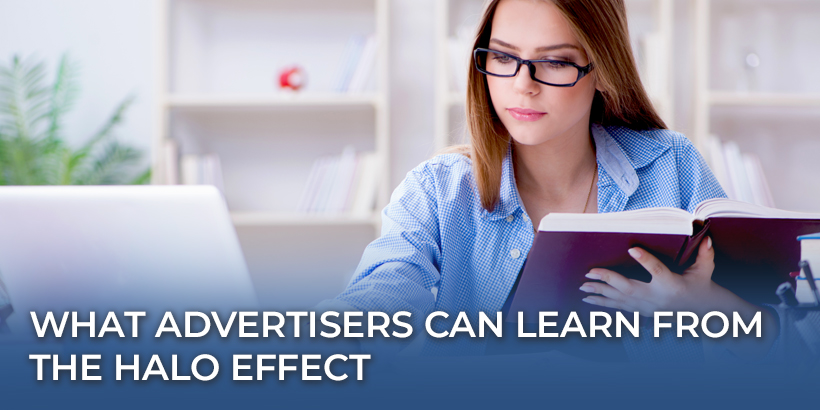
Nearly a century ago, a team of psychologists led by Edward Thorndike discovered that when military officers evaluated soldiers on a variety of qualities, one rating would always affect the others.
If a soldier was rated high for their physical appearance, they were also perceived as smarter, better leaders, and better people. If they were rated low for their physical appearance, they were rated lower in other areas, too.
Thorndike dubbed this cognitive bias “the Halo Effect,” and since 1920, it’s described how people evaluate nearly everything.
So what does this have to do with advertising? What does it mean for your brand?
It means every impression counts. Every ad says something about your brand, and what people take away from your ads carries over to how they feel about you in the future. So you have to make every ad count.
That puts a lot of pressure on your ads, but it also means that advertisers may need to think differently about what success looks like. You also need to think carefully about where your ads are displayed.
Here’s what I mean.
Look beyond conversions
When an ad doesn’t convert well, it’s easy to feel like it was a failure. You set out to generate as many leads or sales as possible, and your ad wasn’t effective in that way. But how many thousands of people saw your ad, and now have something positive to associate with your brand?
Even when your conversions are low, it’s likely that a significant number of people legitimately considered your offer. And while maybe the timing wasn’t right, your ad made a strong impression. They saw you as thoughtful, trustworthy, professional, wholesome, or funny, but they just weren’t in a position to buy.
That’s OK, because if people view your ad favorably, then thanks to the Halo Effect, they’ll be more receptive to your future marketing efforts.
If a church just renewed their annual subscription with one of your competitors, it’d be tough for them to act on your call to action. But when they eventually have issues with your competitor, they’re going to look to you–the other brand they remember and had a positive experience with.
Or maybe after seeing your thoughtful ad, someone will recommend your product or service—even though it didn’t apply to them. They’ll assume your brand is higher quality because your ad was.
Advertise with brands your audience trusts
We’re all familiar with the term “guilty by association.” That turn of phrase has never been more true for advertisers. We live in a time when consumers constantly boycott brands for their associations with people and activities they consider unethical. They use their buying power as leverage to force advertisers to cut off their connections to websites, shows, or venues they don’t approve of.
In a sense, it’s the opposite of the Halo Effect. They disapprove of any company that works with a brand they disapprove of.
This presents a unique challenge for brands who advertise online. Unless you work directly with a publisher, you may not be aware of which sites your ads appear on and what’s being advertised next to your products.
That’s one of the reasons why it’s worth focusing your ad dollars on publishers your target audience trusts. When your ad appears on an authoritative site for church leaders, it lends credibility to your brand. Even if someone has never heard of you before, seeing you on that site next to other notable Christian brands gives you the benefit of the Halo Effect.
Your audience strongly approves of a website, and that approval affects their opinion of the brands that appear on that site.
Don’t underestimate the power of branding
The benefits of branding often seem intangible. But as you build your brand, you shape how people receive and respond to your marketing. And the more aware people are of your brand and the more positive associations they have with you, the more they seek you out and refer you to friends and family.
That’s why it’s important to choose your advertising partners strategically, too. Put your ads in the right places, and you can glow in the halo of a brand your audience loves.